|
Notes: Barrow for Tarvin was located on the Cheshire Lines Committee (CLC) Manchester Central and Chester Northgate line. The CLC was a joint company made up of the Great Northern Railway (GNR), the Manchester, Sheffield & Lincolnshire Railway (MSLR) and the Midland Railway (MR). The line had opened in stages the section between Mouldsworth and Chester Northgate being the last section to open on 2 November 1874 (for goods services only). The station was known as Tarvin & Barrow when the line opened to passenger services on 1 May 1875.
The station was located on the northern edge of the small settlement of Little Barrow two miles north of Tarvin. The Little Barrow to Dunham Hill road passed over the line at this point and the station was located on the west side of it.
The line was a double track and the station was provided with two platforms. The main facilities were located on the up platform (Manchester direction) with a waiting shelter standing opposite on the down platform. Both buildings were typical CLC designs, distinctive and highly attractive; on the Liverpool to Manchester ex-CLC route Glazebrook, Hough Green, Sankey for Penketh and Padgate stations, all open to passengers, have retained their main building and waiting shed, and are well worth a visit.
The influence of the GNR was, perhaps fortunately, not seen in the buildings, but their overall shape and layout was inspired by the MSLR and the bargeboards by MR practice. The red-brick main building was of generous proportions, consisting of a two storey pavilion at the western end, containing the stationmaster’s accommodation, and a single-storey pavilion at the eastern end, whose roof rose almost to the height of its neighbour. Linking them was a single-storey section entrance hall and ticket office beneath a swept-down roof covering a three-bay iron-arcaded waiting shelter facing the platform. Doorways and windows were given low-pointed heads. The bargeboards were exuberant, with different designs on each gable. The shelter on the down platform had a steep ridged roof, also with exquisite bargeboards.
 The up platform was reached by a driveway and by a footpath that connected to the road overbridge. The down platform was connected to the road overbridge by a sloping pathway. Passengers crossed the line via the road bridge. The up platform was reached by a driveway and by a footpath that connected to the road overbridge. The down platform was connected to the road overbridge by a sloping pathway. Passengers crossed the line via the road bridge.
Tarvin & Barrow had goods facilities west of the passenger station on the up side of the line. They included a substantial brick-built goods shed, two sidings, a loading bay, a weighing machine and a small goods office. The goods facilities were approached by the driveway that served the passenger station.
Controlling the main line and the goods sidings there was a Stevens/CLC signal box, opened on 17 February 1875, of timber construction at the western end of the up platform.
At the time of opening Tarvin & Barrow was served by trains running between Chester and Manchester with some shorter workings to and from Northwich. The CLC had rolling stock but it owned no locomotives; by agreement the locomotives were provided by the MSLR.
In November 1883 the station was renamed Barrow for Tarvin which was a more honest description, Tarvin being so far distant.
 The December 1895 timetable showed seven up and six down trains on Monday-to-Friday. There was an extra train in each direction on Saturday and three trains each way on Sunday. The December 1895 timetable showed seven up and six down trains on Monday-to-Friday. There was an extra train in each direction on Saturday and three trains each way on Sunday.
On 1 August 1897 the MSLR renamed itself the Great Central Railway (GCR). The new company name and logo quickly started to appear on the locomotives that hauled the CLC passenger services through Barrow for Tarvin.
The 1904 Handbook of Stations listed Barrow for Tarvin as being able to handle general goods, parcels, furniture vans livestock and horse vans. The station was equipped with a 5-ton crane.
By July 1922 the service had increased to seven trains each way on Monday, Tuesday, Thursday and Friday as shown in the table below. On Wednesday and Saturday there was an extra train in each direction and there were still three trains each way on Sunday.
Up Trains July 1922 |
Destination |
Down Trains July 1922 |
Destination |
6.44am |
Manchester Central |
7.50am |
Chester Northgate |
8.33am |
Manchester Central |
8.42am |
Chester Northgate |
11.15am |
Manchester Central |
11.07am |
Chester Northgate |
12.30pm |
Manchester Central |
1.22pm |
Chester Northgate |
2.27pm (Wednesdays and Saturdays Only) |
Manchester Central |
3.13pm (Wednesdays and Saturdays Only) |
Chester Northgate |
4.22pm |
Manchester Central |
5.11pm |
Chester Northgate |
6.37pm |
Manchester Central |
6.50pm |
Chester Northgate |
8.37pm |
Manchester Central |
8.21pm |
Chester Northgate |
On 1 January 1923 the GCR and the GNR were absorbed into the London & North Eastern Railway (LNER). The MR was absorbed into the London, Midland & Scottish Railway (LMS). The CLC remained independent but with two thirds of the company shares passing to the LNER and one third to the LMS. The LNER provided the locomotives for the CLC services.
On 1 January 1948 Barrow for Tarvin became part of British Railways (London Midland Region) [BR(LMR)].
The summer 1949 timetable showed nine up and 11 down trains on Monday-to-Friday. There was an extra train in each direction on Saturday. On Sunday there were two up and four down trains.
 Barrow for Tarvin proved to be unremunerative and it was closed completely on 1 June 1953 by BR(LMR). Barrow for Tarvin proved to be unremunerative and it was closed completely on 1 June 1953 by BR(LMR).
The signal box at Barrow for Tarvin was temporarily closed in 1954, but it does not appear to have reopened and was officially abolished on 23 November 1958 by which time the goods sidings at the station had been lifted.
From 7 September 1969 the line through Barrow for Tarvin was singled (between Mickle Trafford and Mouldsworth). The down line was lifted and the former up became bi-directional.
Only the down platform building and the goods shed was demolished after closure. The platforms survived until the mid 1970s and the station building passed into private ownership.
In 2016 passenger trains running between Chester and Manchester were still passing through the site of Barrow for Tarvin station.
Route map by Alan Young
Sources:
- An Illustrated History of The Cheshire Lines Committee, Paul Bolger, Heyday Publishing 1984
- Bradshaws Rail Times July 1922, Guild Publishing 1986
- British Railway Companies, C Awdry, Guild Publishing 1990.
- Cheshire Lines Signal Box Register, M J Addison & J G Dixon, 1996
- Railway Passenger Stations in Great Britain A Chronology - M Quick - Railway and Canal Historical Society 2009
- Additional signal box information from Tony Graham
To see the other
stations on the Mouldsworth to Chester Northgate line click
on the station name: Chester
Northgate & Mickle
Trafford East
|

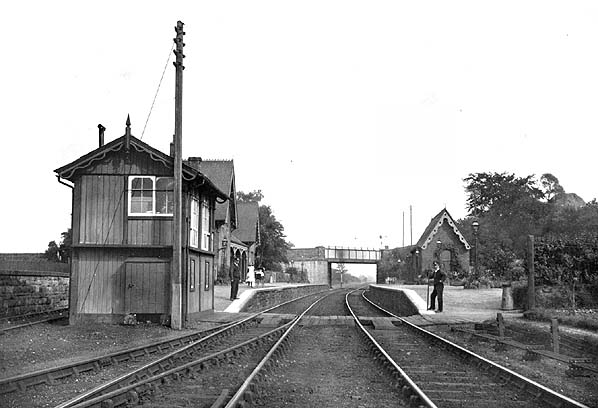
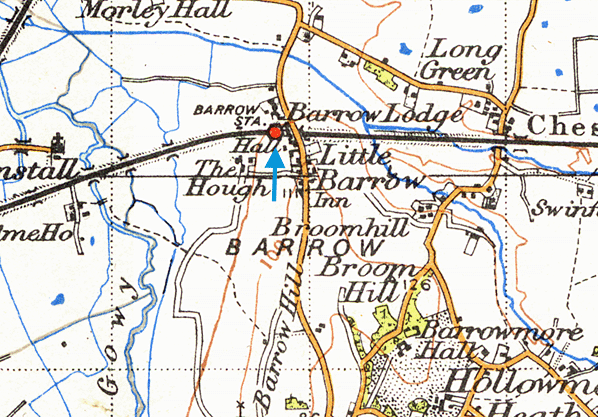
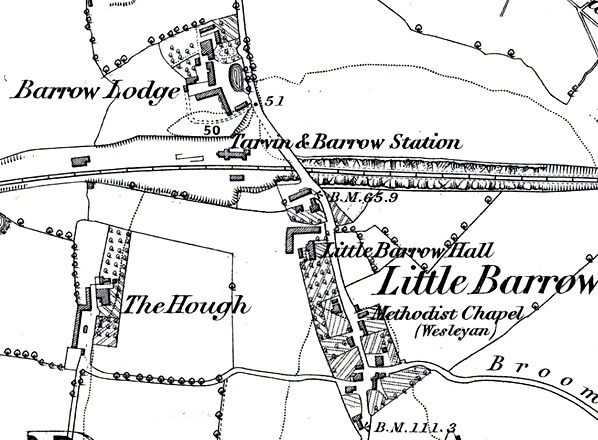
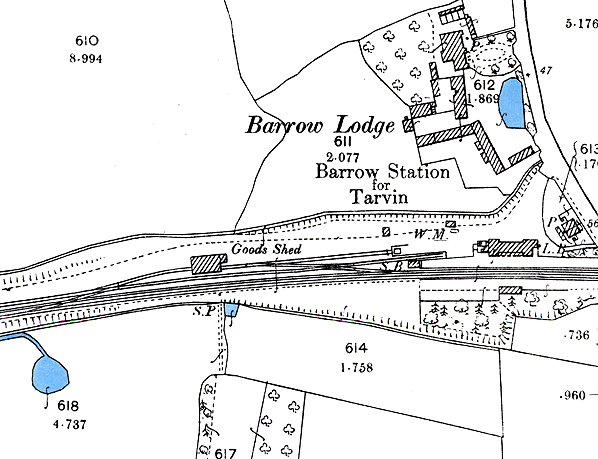
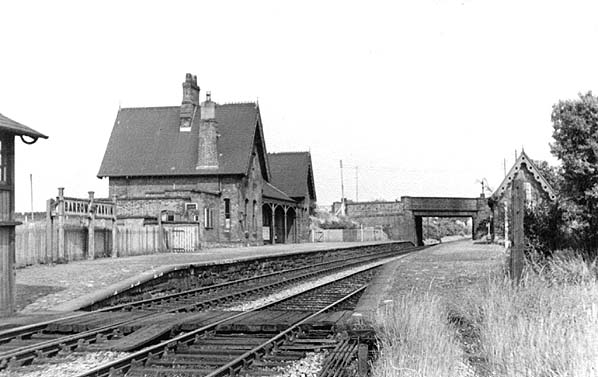
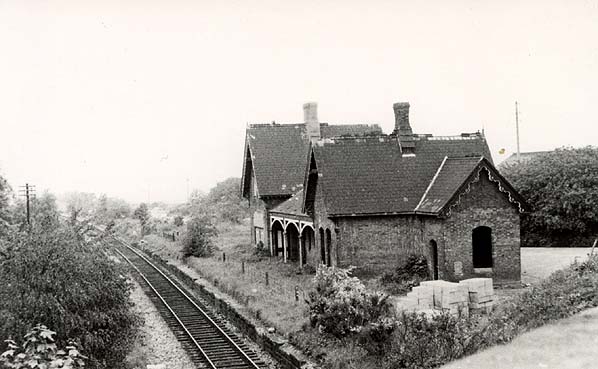
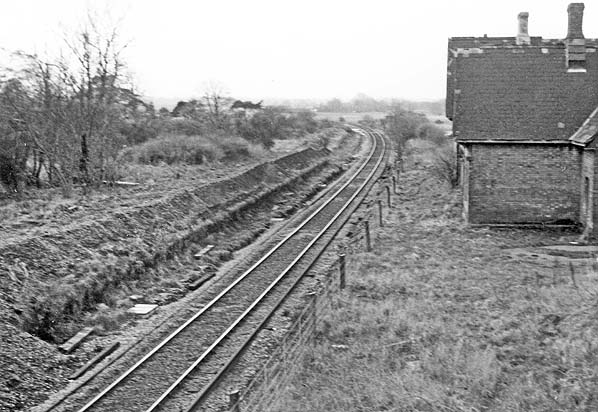
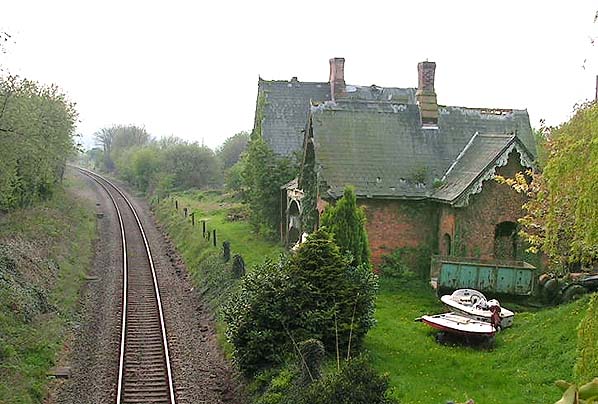
 Home
Page
Home
Page
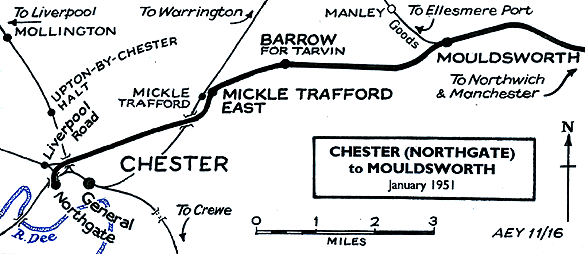
 The up platform was reached by a driveway and by a footpath that connected to the road overbridge. The down platform was connected to the road overbridge by a sloping pathway. Passengers crossed the line via the road bridge.
The up platform was reached by a driveway and by a footpath that connected to the road overbridge. The down platform was connected to the road overbridge by a sloping pathway. Passengers crossed the line via the road bridge.  The December 1895 timetable showed seven up and six down trains on Monday-to-Friday. There was an extra train in each direction on Saturday and three trains each way on Sunday.
The December 1895 timetable showed seven up and six down trains on Monday-to-Friday. There was an extra train in each direction on Saturday and three trains each way on Sunday.  Barrow for Tarvin proved to be unremunerative and it was closed completely on 1 June 1953 by BR(LMR).
Barrow for Tarvin proved to be unremunerative and it was closed completely on 1 June 1953 by BR(LMR).